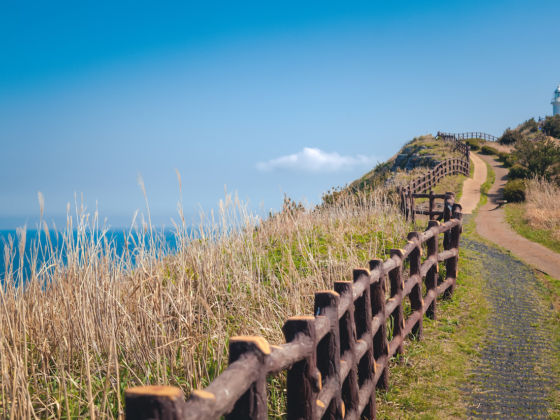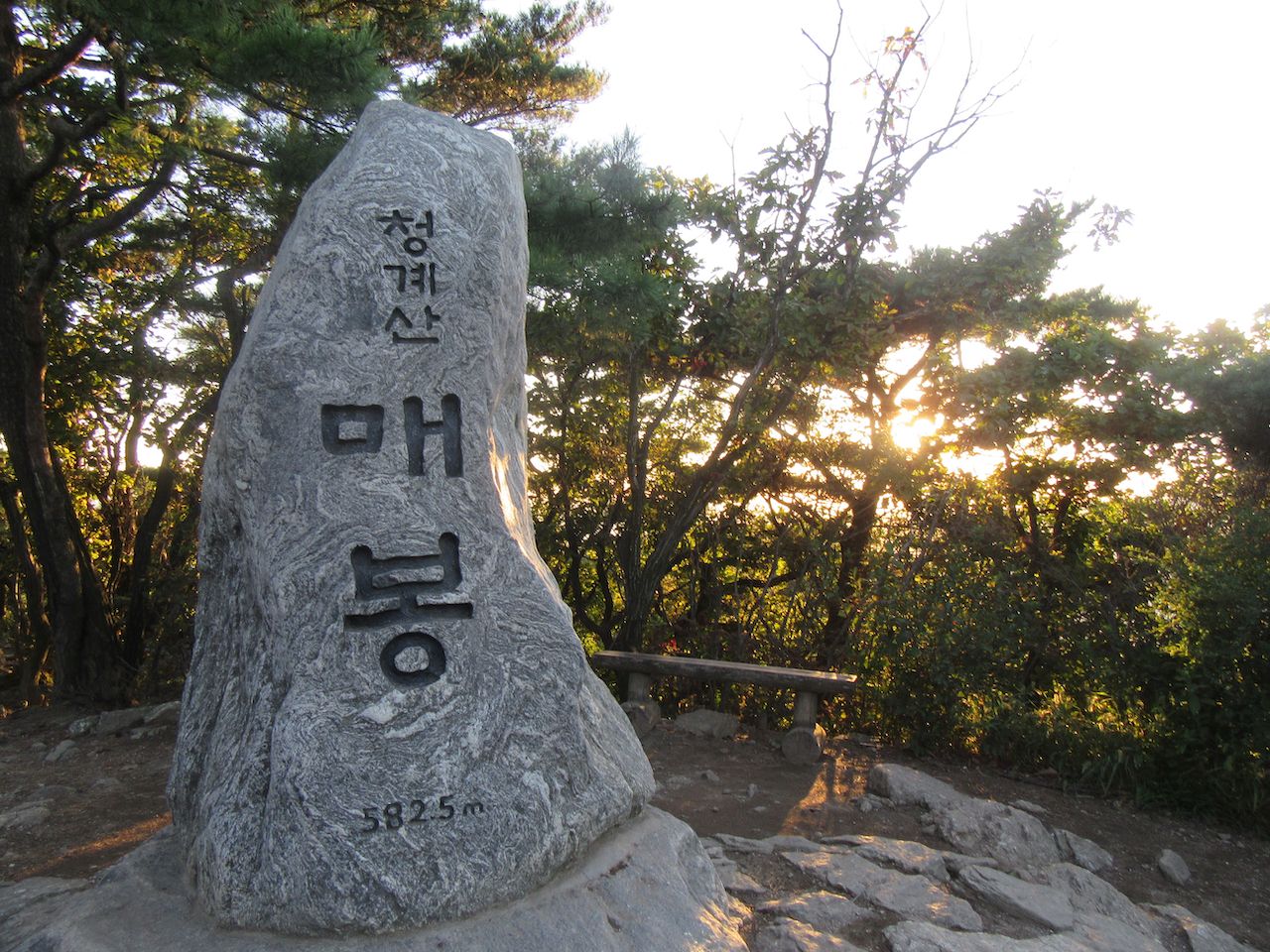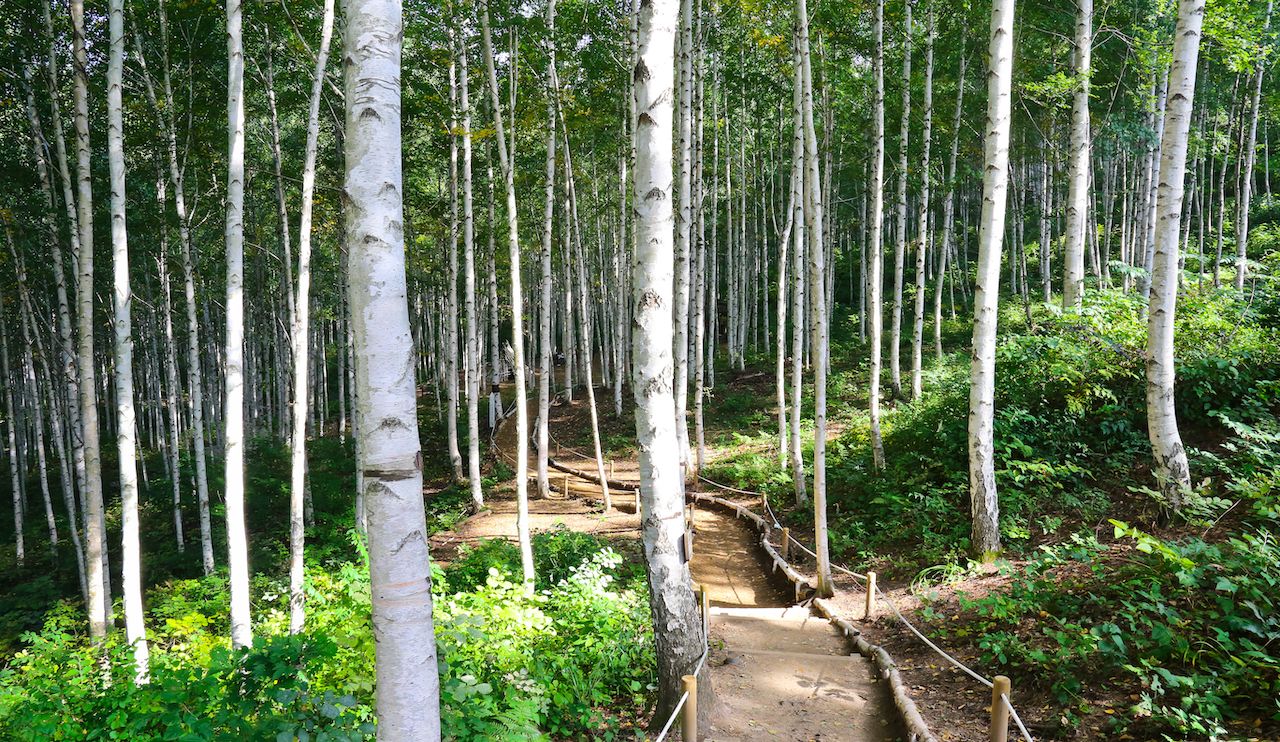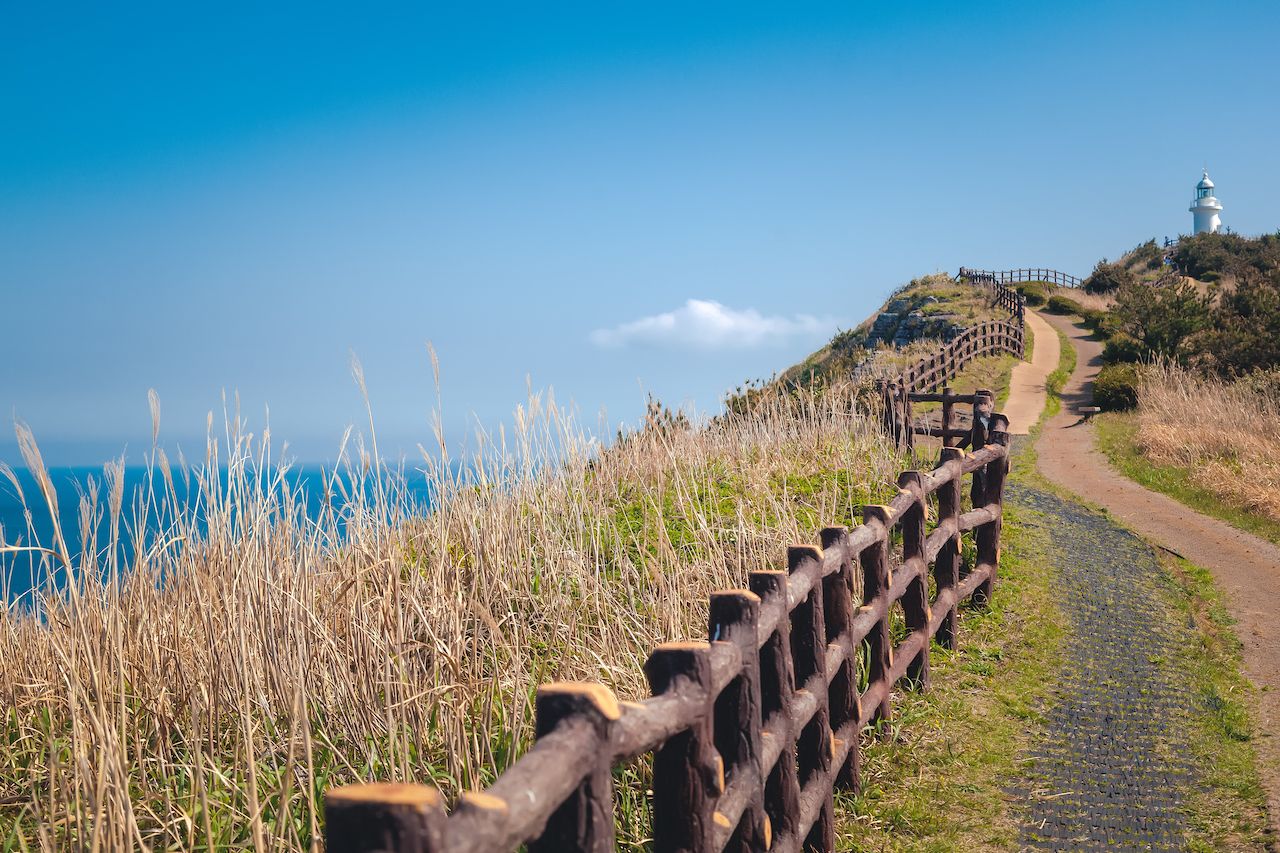Seoul is brimming with late-night entertainment, endless rounds of barbecue, and countless shopping venues. But don’t let the sea of neon signs and skyscrapers fool you. Outside the urban sprawl of South Korea’s capital lies a plethora of verdant escapes from the intense, crowded, digitally obsessed city. If you want to know why it’s called the land of the morning calm, leave the Soju-soaked streets behind and head out into the wild. Whether you are a born woodsman or a newbie on the trail, there are many options when it comes to experiencing the outdoor adventures South Korea has to offer. Here are four hiking and biking trips to take around the peninsula.

4 Refreshing Hiking Adventures Around South Korea From Seoul
1. Cheonggyesan Mountain

Photo: TheBlueFox/Shutterstock
Less known to foreigners than its larger cousin, Bukhansan Mountain, Cheonggyesan is quite popular with local hikers. This mountain sits southeast of Seoul on the border of Seocho-gu and Bundang-gu. You have many options to choose from when deciding which path to take, including both trails with built-in stairs and those without. The most popular trail is about two miles long and just under a two-hour hike one way. Beginning at the Weonteogol entrance, it takes you past Weonteogol spring, a large flat resting area named Heliport, and, finally, the 1,900-foot peak at Maebong. Once you reach the top, you’ll have a stunning view of the bustling metropolitan area below, especially on a smog-free day.
Plan your hike around what you’d like to experience. Some trails offer stunning views of rocky wooded cliffs and small valleys. Other trails are peppered with small temples and pagodas. Some traverse through dense forest. Many locals choose to take a different way down once they reach the peak, as it can be fun to encounter new flora, fauna, and terrain. No matter which route you choose, be ready for crowds.
The local hiking etiquette dictates that slower hikers stick to the far-right edge of the trail, while faster climbers walk in the middle, and those coming down the mountain use the opposite side. Plenty of rest areas dot each trail. Some have benches and resting pagodas, and others even have calisthenics equipment to help stretch your tired muscles. It’s not uncommon to see groups of hikers breaking for lunch along the trail, toasting with small cups of Makgeolli, a rice wine, and Soju, Korea’s better-known liquor.
Take advantage of the merchants in the underpass leading to the park entrance to stock up on water and snacks before heading up the mountain as there are no food or drink options at the peak. Also, pay attention to the trail maps as some trails are little more than small, overgrown footpaths. It’s easy to get lost in the woods, so be mindful and, when in doubt, follow the locals.
Whatever trail you take, you can easily reach the park on public transportation. Traveling from Seoul, head to Yangjae Station on Line 3. Leave out of exit 10 and take bus number 4432 to the Weonteogol stop. Walk beneath the underpass and follow the crowds of local hikers in brightly colored gear to the park entrance. If you’re more comfortable on the subway, at Yangjae Station, transfer from Line 3 to the Shin Bundang Line and travel to Cheonggyesan Station. Follow the signs to Exit 2 and walk about 400 meters to the underpass that leads to the park entrance.
2. Achimgari River and Gangwondo

Photo: Ahn Eun sil/Shutterstock
For a more unique hiking adventure, leave the city completely behind and travel to the Gangwondo region for a day-trip. Lying northeast of Seoul, this region offers year-round outdoor activities, be it hiking and rafting in the warmer months or skiing and ice-fishing during the winter. During the hot and humid Korean summer, cool off with a combined forest and river hike at Achimgari River.
From Inje, you will have a steep uphill climb on flat terrain before reaching the forest entrance to the river valley. Most hikers choose to pack a lunch and an extra pair of clothes in a waterproof bag. After the 50-minute trek to the trail entrance, there’s a small strip of shops where you can purchase beverages and light snacks. Take a break in the forest shade along the river and enjoy the fresh air and calming flow of the river before starting your trek, where you can choose to swim or just wade through the river. The water is relatively shallow, and the current isn’t very fast. Most hiking guides will lead you on a looping trail that crosses the river several times as you hike through the dense forest on either side of the banks. Halfway through the hike, there’s a large cliff that is popular for jumping into the river and having a swim to cool down. You’ll also pass several natural, flat areas along the way where hikers can rest during the journey.
This hike is quite remote, and public transportation is not a viable option. It’s also difficult to locate the park entrance without local knowledge. Fortunately, there are many groups dedicated to hiking and outdoor adventure in Korea, which you can contact online. Join a hiking group or charter a tour to reach this unique hike. The entire trip takes about five hours total, ending at the bottom of the hill where your climb began. Change into your dry clothes, head back to your bus, and have a nice nap during the ride back to Seoul.
3. Jangbongdo Island

Photo: pradis3535/Shutterstock
South Korea is surrounded by several thousand islands offering unique terrain features and stunning views. Take a day trip off the coast of Incheon, a major city northwest of Seoul, and visit the small island of Jangbongdo to experience a serene hike. Suitable for beginners, this trek begins with a 40-minute ferry ride from SamMok Passenger Terminal. Enjoy the sea breeze along the railing on the upper deck and watch the locals throw food offerings at the visiting seagulls. Once you dock, follow the sea of people to the terminal exit. Though this hike is easy to complete, it can be difficult to locate the trail entrances. This is another opportunity where joining a hiking group will make the experience a lot less stressful.
Start your journey on the beach near the ferry terminal. Take in the sparkling blue waters of the ocean as you stretch and prepare for the hike. The most popular route follows a winding path along the island ridge, starting on the beach, then traversing rocky dirt paths through the forest until it reaches the beach on the opposite side of the island. It’s about a five-hour trek. Along the way, enjoy gorgeous cliff-top views through tree-lined ridges. There are resting pagodas along most trails.
Alternatively, hike down to the rocky beach to relax and listen to the waves. No matter which you choose, end your hike with a refreshing swim at a small beach camp. Many locals pack their cars with tents and grills and use the ferry to escape to the island for a beach camping getaway. You can buy swimwear and basic food items at one of several shops scattered along the beach. Take a dip in the ocean or nap in the sand before heading back to the ferry, walking a direct path along the paved island road diagonally across the island interior.
The easiest way to reach Jangbongdo island from Seoul is to take the Airport Railroad Line from Seoul Station to Unseo Station. Leave from Exit 1 and take bus 204 for a 10-minute ride to the SamMok Quay Entrance. Be aware that you need your passport to purchase a ticket and board the ferry, and take note of the ferry schedule so you don’t miss the last departure.
4. Udo Island

Photo: Olesya Kuznetsova/Shutterstock
Jeju is South Korea’s most famous island. Nicknamed little Hawaii, it boasts a more tropical climate than the mainland. But for even more of an escape, hop on a ferry for a 15-minute cruise from Jeju to tiny the island of Udo. Snap some photos of the quaint lighthouses surrounding the island as you head to the dock. The name Udo translates to cow, and locals will try to convince you to squint and see the shape of a cow lying on its side. Udo is a vacation paradise with inns, boutique hotels, and cafes lining the coast, all angled for optimum views of the ocean. The island is relatively flat and an excellent location for an easy biking trip.
The bike route is only about a two-hour round trip journey, minus any time you stop to take in the lovely sights and visit the many attractions dotted along the coast. Immediately outside of the ferry terminal, you’ll be bombarded with shops open for you to rent bikes, motorbikes, and golf carts to whisk you around. Take your pick from the baskets of beat-up helmets, then choose your bike. Make sure to pick up a map before you go to help you plan your pit stops. You can bike along the two-lane road that winds along the coast, sharing space with motor vehicles and pedestrians. Take your time to explore attractions such as Popcorn Beach and the Udo lighthouse.
Udo is very popular with young couples and families, and no trip here is complete without sampling the island’s famous peanut ice cream as you watch waves crashing into the cliffs. Before reaching the ferry terminal at the end of your journey, take a detour along one of the narrow roads that wind through the villages of Udo. You’ll get a glimpse of local life, passing horse pastures, farms, and ramshackle homes as you head back to turn in your bike and board the ferry to Jeju.
This adventure is for those explorers looking for longer than a day trip. When traveling from Seoul, you will need to hop on a plane for a short flight to Jeju Island, then head to Seongsan Port. Take note of the ferry schedules. There are two ferry terminals on Jeju with trips to Udo, and there are also two terminals on Udo Island. Each terminal has a unique schedule. Your bike shop may offer shuttle service to the appropriate departure ferry if requested, so make sure to inquire once you’ve returned the biking equipment. Remember to bring your passport as you’ll need it to purchase ferry tickets and rent a bike. Bring your driver’s license if you plan to rent a motor vehicle instead.